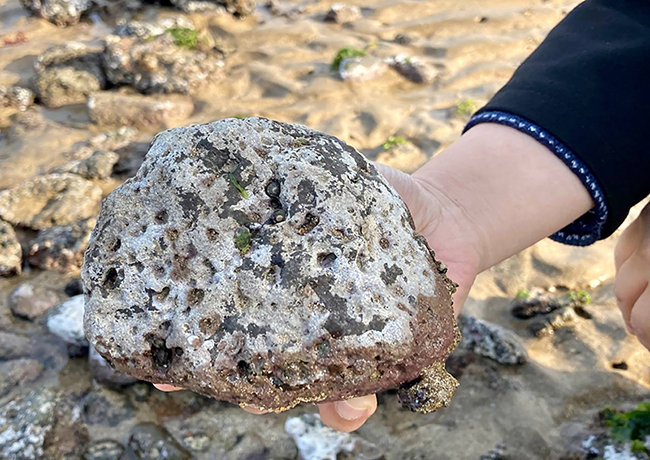
The urchin barren is appearing seriously throughout all the Jeju coast. “Green Korea United” investigated 200 foreshores in 97 coastal villages last October. According to the investigation result, it has been confirmed that seaweed is disappearing and calcareous algae is covering the rocks changing them white, which is the symptom of the urchin barren.
The seaweed colony located on the coastline is the primary producer of the marine ecosystem. However, as the urchin barren has been progressing, the seaweed colony has entered the extinction stage. Seaweeds were found only in 17 coastal villages in Jejusi and only one in Seogwipo-si, where all seaweed colonies have disappeared from the foreshores except for Sagye-ri. This occurrence is also ruining the natural landscape. Famous tourist spots such as Yongmeori Beach, Hamdeok Beach, Seongsan Sunrise Peak, etc., are threatened by urchin barren. You can easily see that coastal bedrock is white with your naked eye.
Green Korea United presented four problems: absence of specific cause investigation, a lack of data on changes in the marine environment, water quality control crisis, and a lack of fundamental and integrated management policies. No research is being conducted to determine the actual cause and, except for records of sea level and surface water temperature, fundamental data on changes in the internal structure of the ocean, marine species, and habitat environment are insufficient.
Based on these issues, they demand fundamental and integrated policies to Jeju: declaring an emergency on the sea and allocating labor and budget, a close investigation of the cause of urchin barren, forming a public-private joint consultative body, etc.

